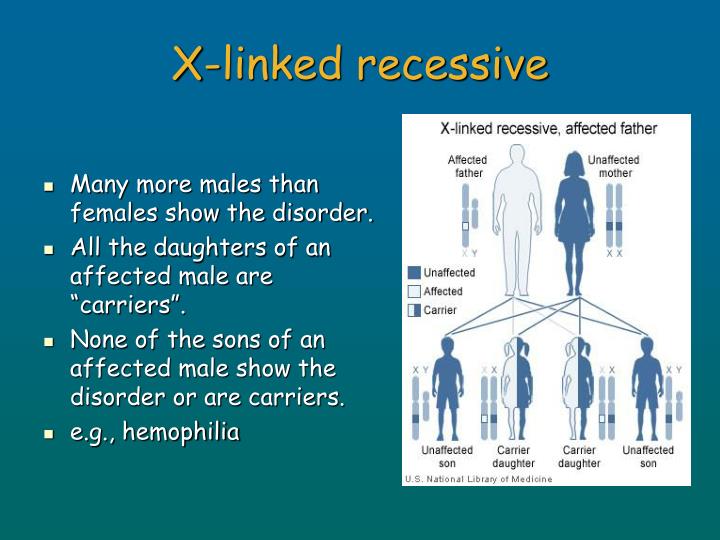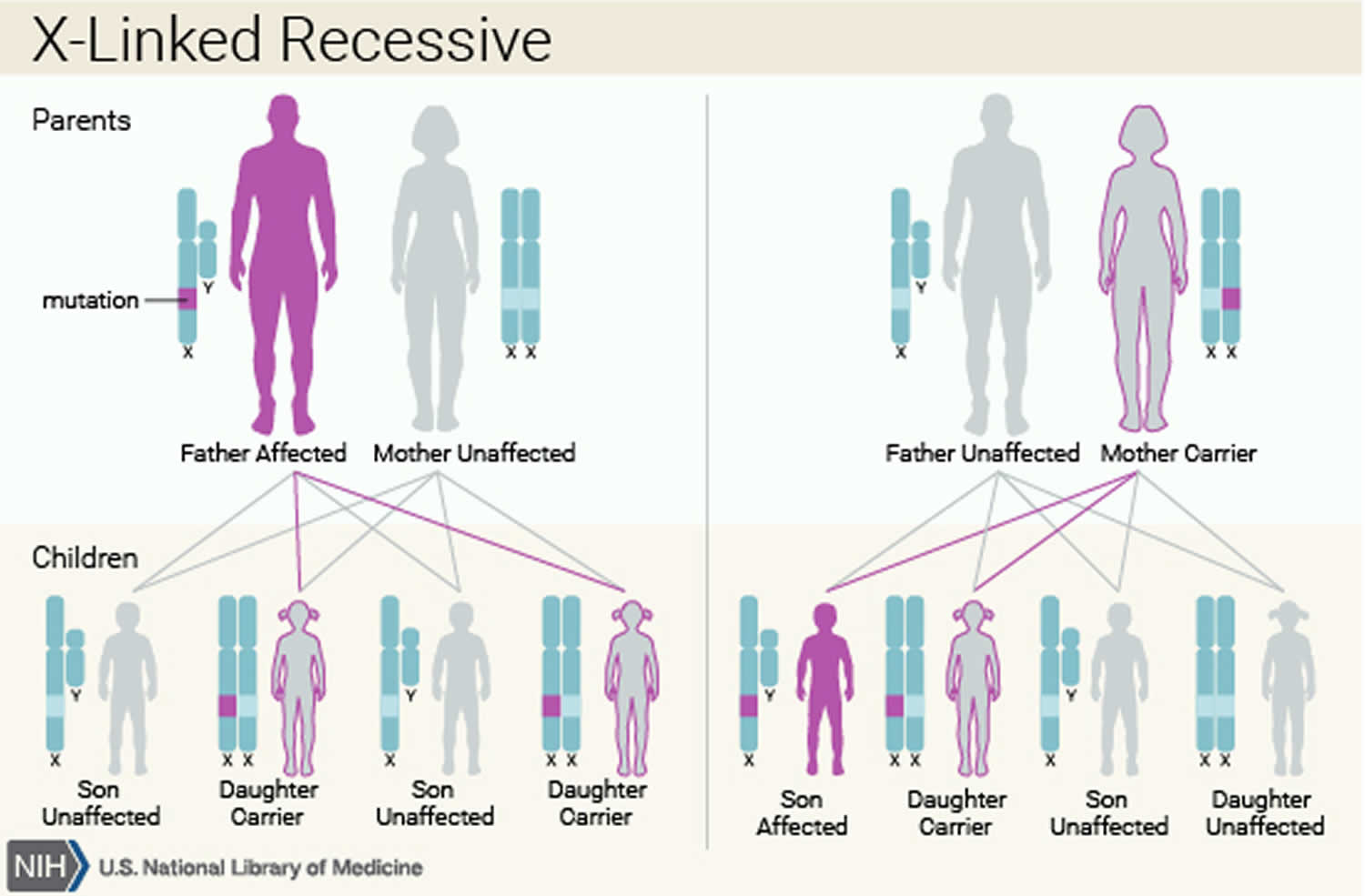

Females typically have two X chromosomes, so in most cases, a variant needs to be present on both copies of the X chromosome to cause the condition.Over 130 X-linked genes have been robustly associated with developmental disorders, and X-linked causes have been hypothesised to underlie the higher developmental disorder rates in males. To summarize, males typically only have one X chromosome, so a single genetic variant is sufficient to cause an X-linked recessive condition.


However, in most cases, they are not expected to develop symptoms of G6PD deficiency unless they also inherit a variant from their mother. (They pass a Y chromosome on to their male children.) Each of these female children will inherit a variant from their father. Males with a variant in the G6PD gene will pass this variant on to their female children but will not pass this variant on to their male children.In most cases, female children who inherit this variant are not expected to develop symptoms of G6PD deficiency unless they also inherit a variant from their father. If a male child inherits this variant, he is at risk for developing symptoms of G6PD deficiency, regardless of whether his father has a variant. This is because females have two X chromosomes and pass a copy of one of those chromosomes on to each child. Females with a variant in the G6PD gene have a 50% chance of passing this variant on to each of their children.We'll continue using G6PD deficiency as an example. X-linked recessive inheritance also has implications for people who are considering having children. This means that males with just one variant in the G6PD gene are at risk for developing symptoms of G6PD deficiency. (As mentioned above, males inherit a Y chromosome from their father.) If a male inherits a disease-causing variant in the G6PD gene from his mother, he doesn't have a normal version of the G6PD gene as a backup. Males typically have only one X chromosome, which they inherit from their mother.In order to develop symptoms, most females need to inherit two variants (or two copies of a variant): one from their mother and one from their father. This means that most females with just one variant are not expected to develop symptoms of G6PD deficiency. In most cases, that normal version of the gene can compensate for having a disease-causing variant on the other chromosome. If a female inherits just one disease-causing variant in the G6PD gene (from her mother or her father), she still has a "normal" version of the G6PD gene on her other X chromosome. Females typically have two X chromosomes, one from their mother and one from their father.It's caused by genetic variants in the G6PD gene, which is located on the X chromosome. G6PD deficiency is a common genetic condition characterized by episodes of anemia. We'll use an X-linked recessive condition called G6PD deficiency as an example. Because it's less likely that females will have a variant on both X chromosomes, X-linked recessive conditions tend to occur more frequently in males than in females. For females (who have two X chromosomes), a variant typically needs to be present on both copies of the X chromosome to cause the condition. For males (who only have one X chromosome), a single genetic variant is sufficient to cause an X-linked recessive condition. Since the number of X chromosomes a person has depends on his or her genetic sex, disease-causing variants found in genes on the X chromosome have different implications for males and females. X-linked recessive inheritance is an inheritance pattern that's specific for certain genetic variants found on the X chromosome. Instead of a second X chromosome, males inherit a Y chromosome from their father. But males only have one X chromosome, which they inherit from their mother. Females inherit one X chromosome from their mother and one X chromosome from their father, just like the other chromosomes. The exception to this rule is the sex chromosomes, called X and Y. One chromosome in each pair is inherited from your mother and the other from your father, and in most cases, the two chromosomes in each pair are very similar. Your DNA is organized into 23 pairs of chromosomes.


 0 kommentar(er)
0 kommentar(er)
